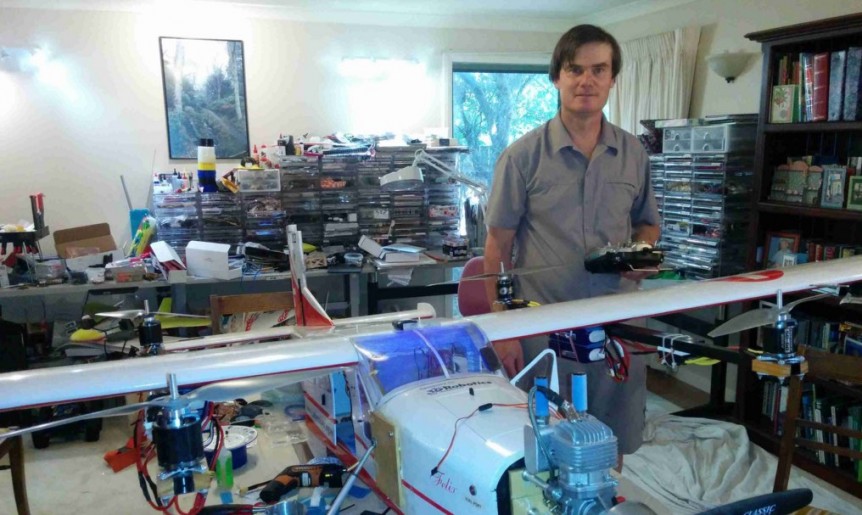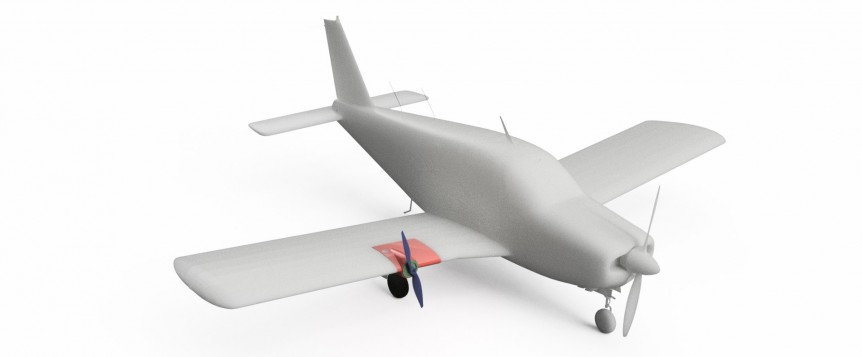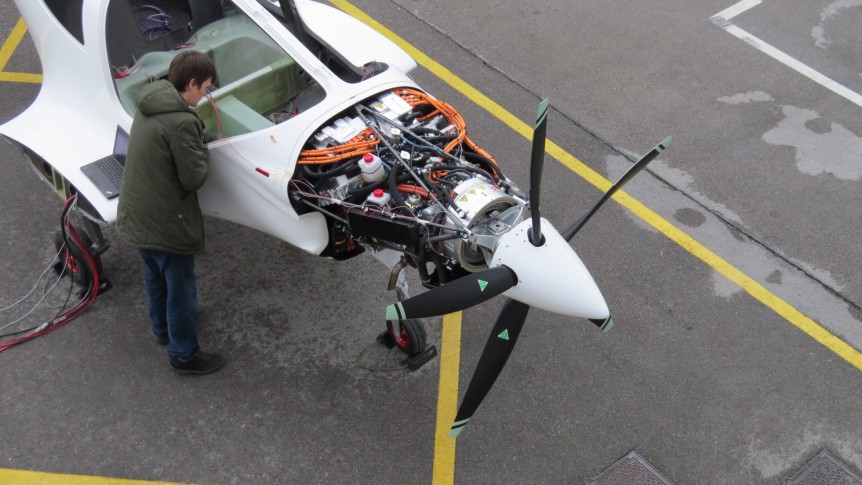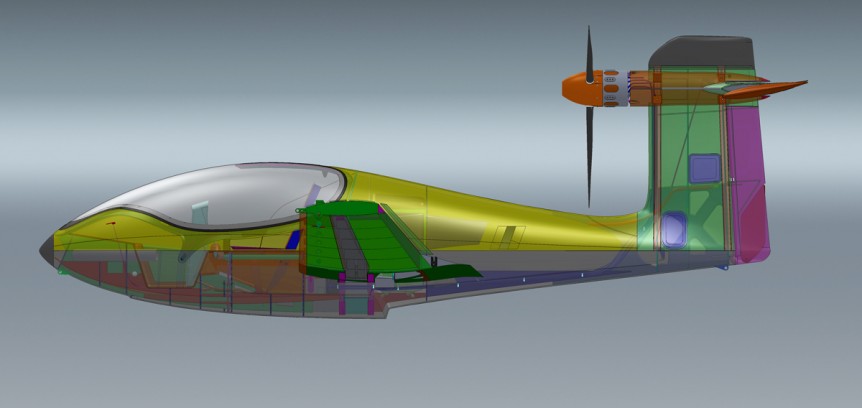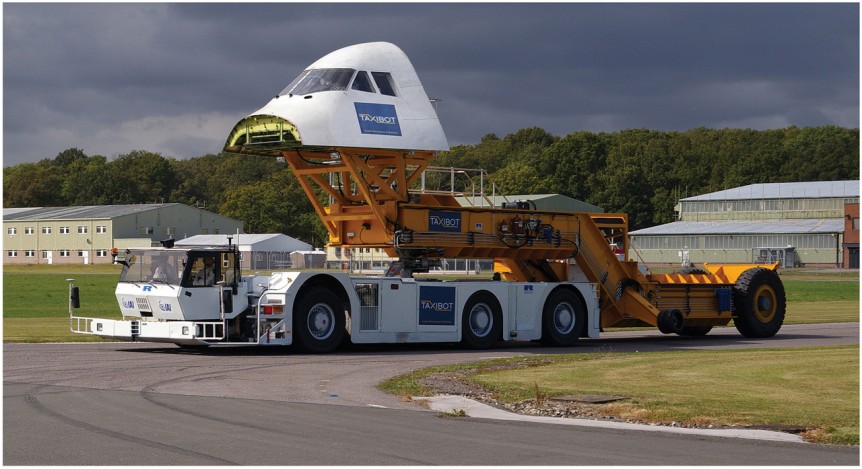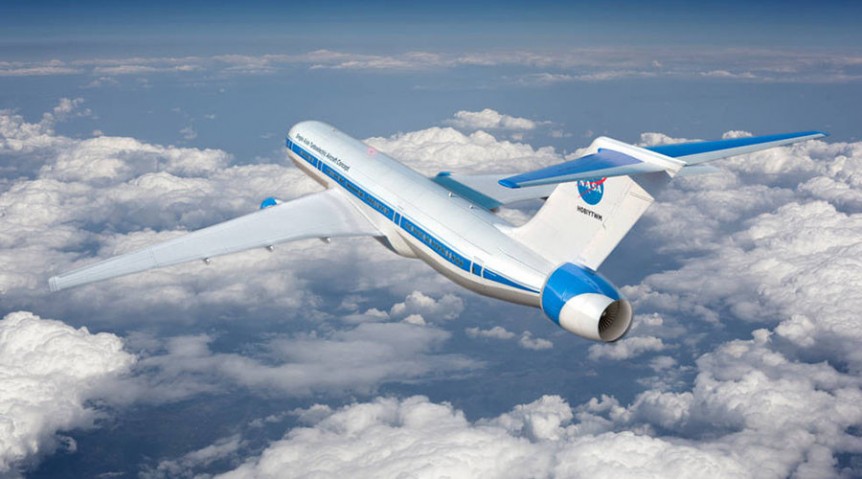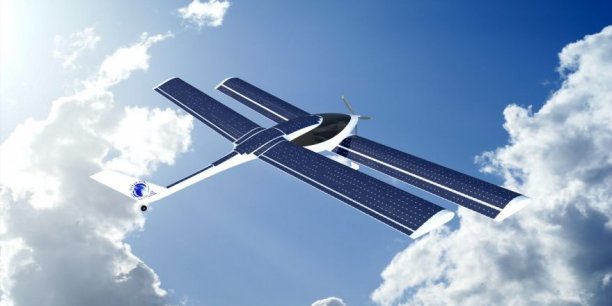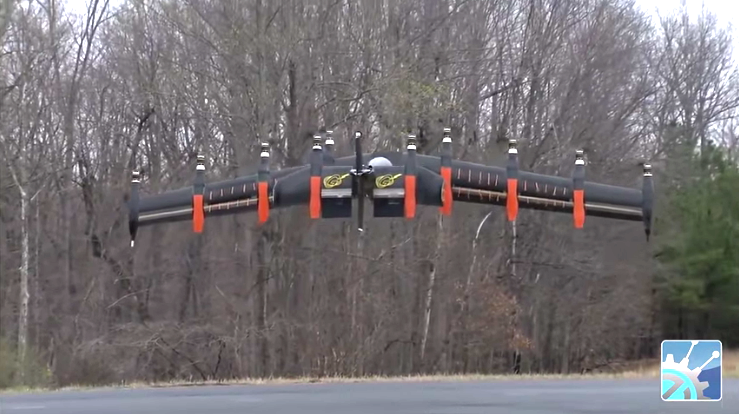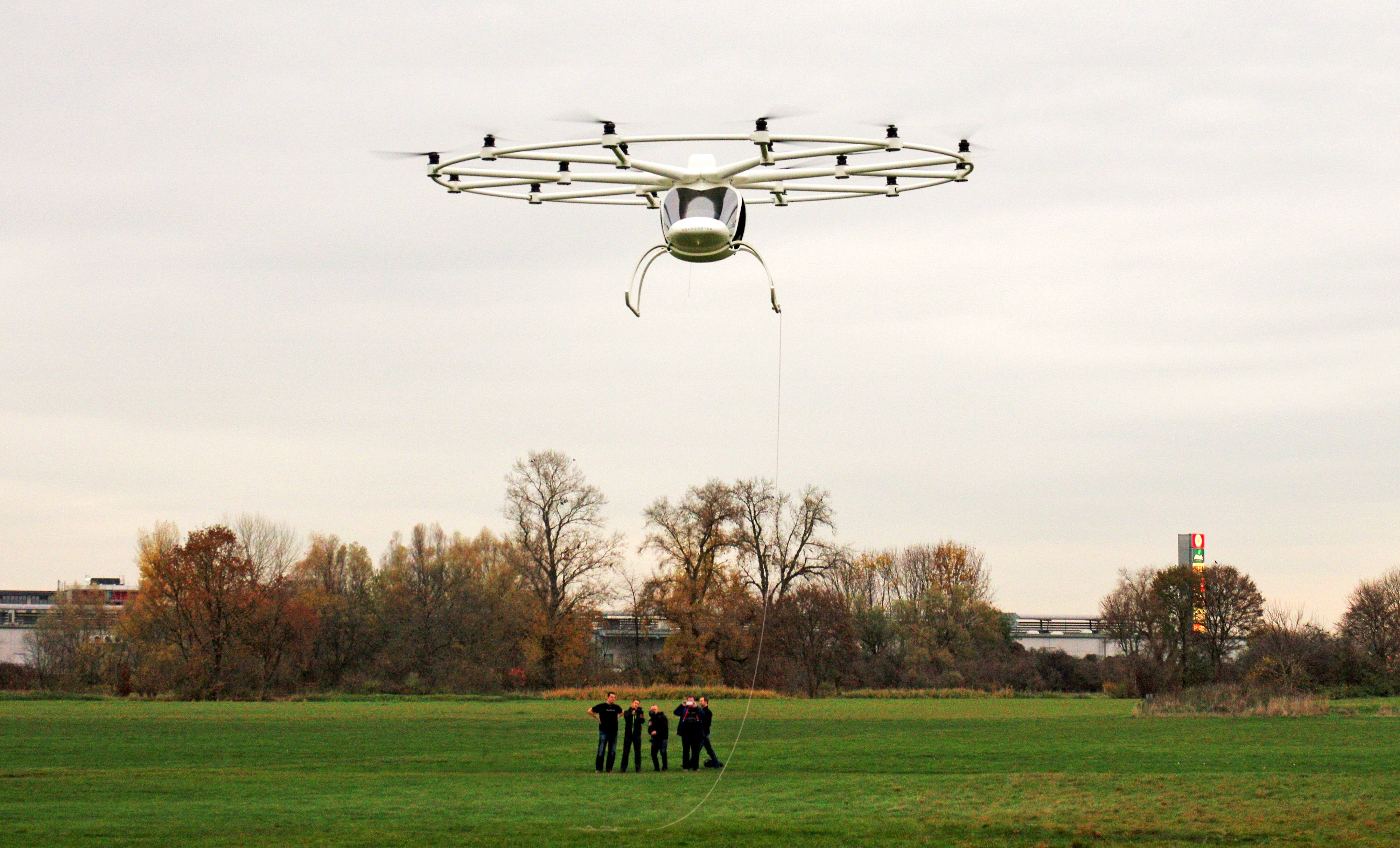Richard Glassock, a long-time contributor to the blog, is from Australia, and has lived and worked in Hungary for the last few years. He’s known to blog readers for his work in autonomous aircraft, very large sailplanes, and hybrid propulsion design. He shares news this week about “some excellent work by an Australian researcher I have known for a while. In one way or another, he is actualizing many of the ideas/dreams I had 20 years ago.” The craft isVTOL (vertical takeoff and landing), fixed wing, capable of automated flight, and is almost a hybrid (depending on definition). It was developed for the Outback Challenge, originally a chance for aircraft designers to show how their craft could autonomously search for and find Outback Joe, a mannequin layabout who would otherwise become dingo bait. The 2014 event “was themed around an outback rescue mission.” 2016 sees Joe “stuck in a clearing in the Australian Outback, surrounded by floodwaters, but needs to …
Needed: a Four-Seat Light Airplane for Electrifying Research Project
We’d all love to have a hybrid electric airplane – inexpensive to fly with great range and guilt-free airport hamburgers. Jeffrey Engler, who heads an innovative project devoted to green aviation, explains: “Our plan is to convert a Piper Cherokee, Cessna 172, or similar light four-seater to electric hybrid power. The airplane should be airworthy with a serviceable engine and avionics. We don’t want a hangar queen or an airport relic – just a flyable, reasonable example at a reasonable price.” Aeronautics students at Purdue University, as part of their graduate work, are backing this program. Jeffrey reports, “The rock stars at Purdue presented their first interim report yesterday, including a background on electric aviation and their initial evaluation of the Cherokee retrofit. It’s too early to say where the numbers will come out, but we’re excited for their detailed analyses and recommendations in March. Here’s their deck (link). Congrats team!” (Editor’s Note: It’s apparent the students have done their homework. The presentation shows …
Pipistrel Rolls Out Hypstair Hybrid for Run-up
Pipistrel took the wraps off its latest iteration of what was originally called the Panthera, the hybrid variant of which has been renamed the HYPSTAIR, a pun that fails to diminish the significance of the achievement. Pipistrel clams the most powerful aerial hybrid electric power train, powering it up on February 9 and making a mighty, but subdued noise, much of it coming from the specially-designed, five-bladed propeller. Putting out 200 kilowatts (268 horsepower) at full throttle, the Siemens motor turned the propeller using first just the generator, and then the motor in low and high power modes. The propulsor (perhaps a new term to consider as hybrid power becomes a common operational type for electric aircraft) produces 100 kW (134 hp.) from the generator driven by a turbonormalized internal combustion engine, and the top rated power from the drive motor (150 kW continuous, or 201 hp.). These impressive numbers allow the HYPSTAIR to achieve the same kinds of performance of …
Tomas Brødreskift to Appear at SA Symposium
With the upcoming Sustainable Aviation Symposium (May 6-7, 2016) already packed with stellar presenters, we are excited to have Tomas Brødreskift join the faculty. An industrial designer whose skills in product and process design, project management, ergonomics, and visual and CAD design have led and enabled him to bring his amphibious Equator P2 Xcursion to life will share his expertise and experiences with attendees at the Sofitel San Francisco Bay. Tomas’ demonstrated skills in designing everything from Hardrocx mountain bikes to an array of consumer goods have helped prepare him to guide the Xcursion from concept to final product. Since he has overseen every step of the design/build process, the airplane is a reflection of its unique specification and its designer’s attention to detail. The Equator web site explains, “The P2 was designed from the ground up to be a highly practical aircraft. It is made for 2 people initially (with a future option for 4 seats) with focus on …
Fuel Cells for Taxiing
What seemed like an easy transition a few years ago has been delayed by one developer. “Safran and Honeywell have delayed by two years the planned entry into service of their electric green taxiing system (EGTS), a device designed to enable an airplane to taxi with its engines shut down. Aviation International News (AIN) quoted a spokesperson as saying, “The team is still working on the program with a goal of certification in 2018 and entry into service shortly after.” The system uses motors on the main gear to enable taxiing under power. One of several competing systems, WheelTug, has motors on the nose gear only. Wheeltug uses a Boeing 737-800 as a testbed for the certification program. A United States company with manufacturing apparently based in Gibraltar, WheelTug claims orders for 985 systems by 22 airlines. Another system, TaxiBot, was developed by Israel Aerospace Industries in cooperation with France’s TLD, Germany’s LufthansaLEOS, the ground-handling component of the airline. The …
Electric Jet Hybrids – Big and Small
NASA’s Glenn Research Center reviews the prevalence of fossil fuels in keeping us flying for over a century. “Since the beginning, commercial planes have been powered by carbon-based fuels such as gasoline or kerosene. While these provide the energy to lift large commercial jets into the world’s airspace, electric power is now seen as a new frontier for providing thrust and power for flight.” Noting the use of hybrid and turboelectric power used to increase efficiency in cars, boats and trains, NASA has set a goal “to help the aircraft industry shift from relying solely on gas turbines to using hybrid electric and turboelectric propulsion in order to reduce energy consumption, emissions and noise.” This would require a large shift in propulsion and overall aircraft design and Jim Heidmann, manager for NASA’s Advanced Air Transport Technology project reflects on those changes. “Moving toward alternative systems requires creating new aircraft designs as well as propulsion systems that integrate battery technologies and …
A Solar-Algae Hybrid for an Atlantic Crossing
Henri Mignet was never quite able to master an airplane with three-axis controls, and built at least seven flawed attempts at simplified controlled flight. His seminal try, the HM-8 Pou de Ciel (literally, Louse of the Sky, or more familiarly, Flying Flea) became first a matter of celebration for amateur aviators and then a cause of scandal, being banned in Britain following a series of fatal crashes. The “formula”, as proponents called Mignet’s tandem wing configuration, was sorted out after wind tunnel tests in England and America uncovered the flaw that caused the craft to pitch down in an unrecoverable dive. (For a well-illustrated history of Mignet’s design, see Henri Mignet and his Flying Fleas by Ken Ellis and Geoff Jones. Although out of print, used copies are available at Alibris and Abe Books, at higher prices than your editor paid for his new copy 25 years ago.) Later models of the formula have proven to be safe, stable fliers, …
Green Aviation at COP21
COP21, the Congress of Parties 21 – the 21st gathering of nations and organizations working toward an agreement on reducing greenhouse gases, has concluded with what many conclude to be a historic turn from fossil fuels to cleaner, greener means of powering the world’s economy. At a gala “SolutionsCOP21 – Celebrate the Champions Night” at the Grand Palais on the Champs-Élysées in Paris, leaders in demonstrating clean energy solutions were honored and awarded. Globe-straddling solar aviation and electric commuter helicopters showed a few of the environmentally conscientious directions aviation has taken and in which sustainable flight can take flight in the near future. Eraole, Mignet’s Formula Redefined Eraole, with its first motor run at COP21, is a tandem-winged cruiser that will fly on a combination of solar power and biologically-derived algae fuel driving its single electric motor. The 14 meter wings and large horizontal tail provide space for 43 square meters (462.8 square feet) of 24-percent efficient solar cells. These …
Hybrid Happening Follow-up, Followed by Not-So-Wild Speculation
Richard Glassock, the blog’s unofficial hybrid power reporter, sent the link to this video about the NASA GL-10 Greased Lightning test vehicle – which combines hybrid power with vertical take-off and landing abilities. It’s a more detailed look at the power system and flight characteristics of this aircraft. The Graupner model airplane people obviously know a good thing when they see it, as reported here by the TestFlite gang – a group of enthusiastic model builders and flyers with a try it on and see if it fits attitude. They excel in action-packed aerial photography that would make Michael Bay jealous. Their test subject flies like a GL-10 or Joe Ben Bevirt’s S2s, and looks a great deal like an Oliver Garrow design. Graupner’s price seems reasonable for a model craft that emulates what NASA doubtless spent much more on perfecting. It manages to perform the same kind of VTOL performance with very smooth transitions to forward flight. The software, …
The Proof is in the Piloting
Helicopter flying has been compared to patting your stomach while rubbing your head, something few manage well, if at all. Imagine trying to not only keep the rudder pedals, cyclic and collective under control but also fiddling with 18 throttles. Even a conventional helicopter is a handful with one engine or motor. Maintaining level flight with multiple lifting points at different points around the central fuselage would add to that level of difficulty beyond most people’s mental processing levels. Luckily, someone at Volocopter has worked out a very clever and quick-witted set of algorithms to take the stress out of that high-risk conundrum, as proven by company CEO Alex Zosel’s recent flight – single-handed and even briefly hands-off. Heike Blödorn, the firm’s public relations spokesperson, writes, “Alex Zosel is thrilled after his first flight and explained that ‘for years, we have claimed that the Volocopter is super easy to fly, now we’ve proven it in a very impressive way. I …

